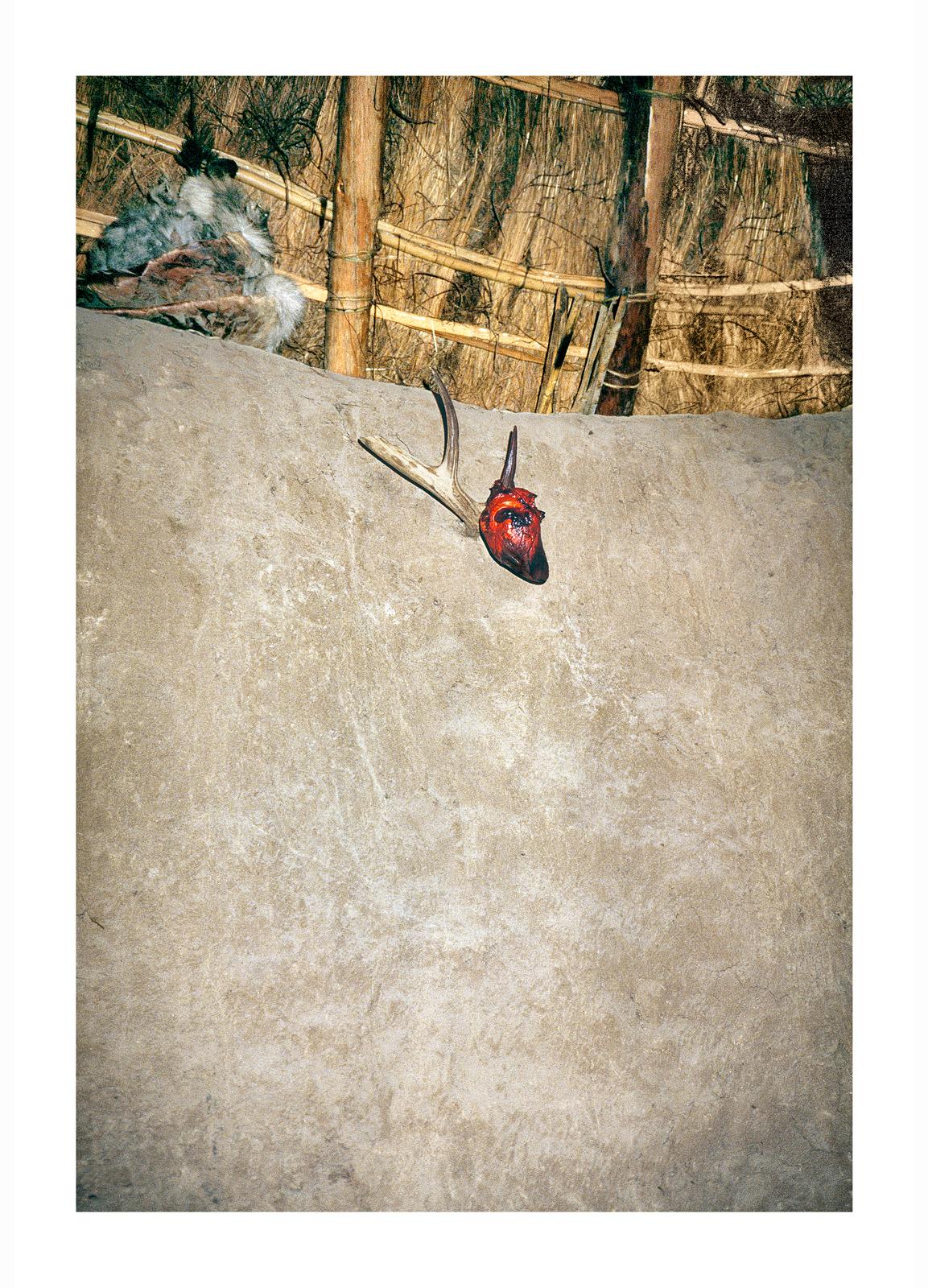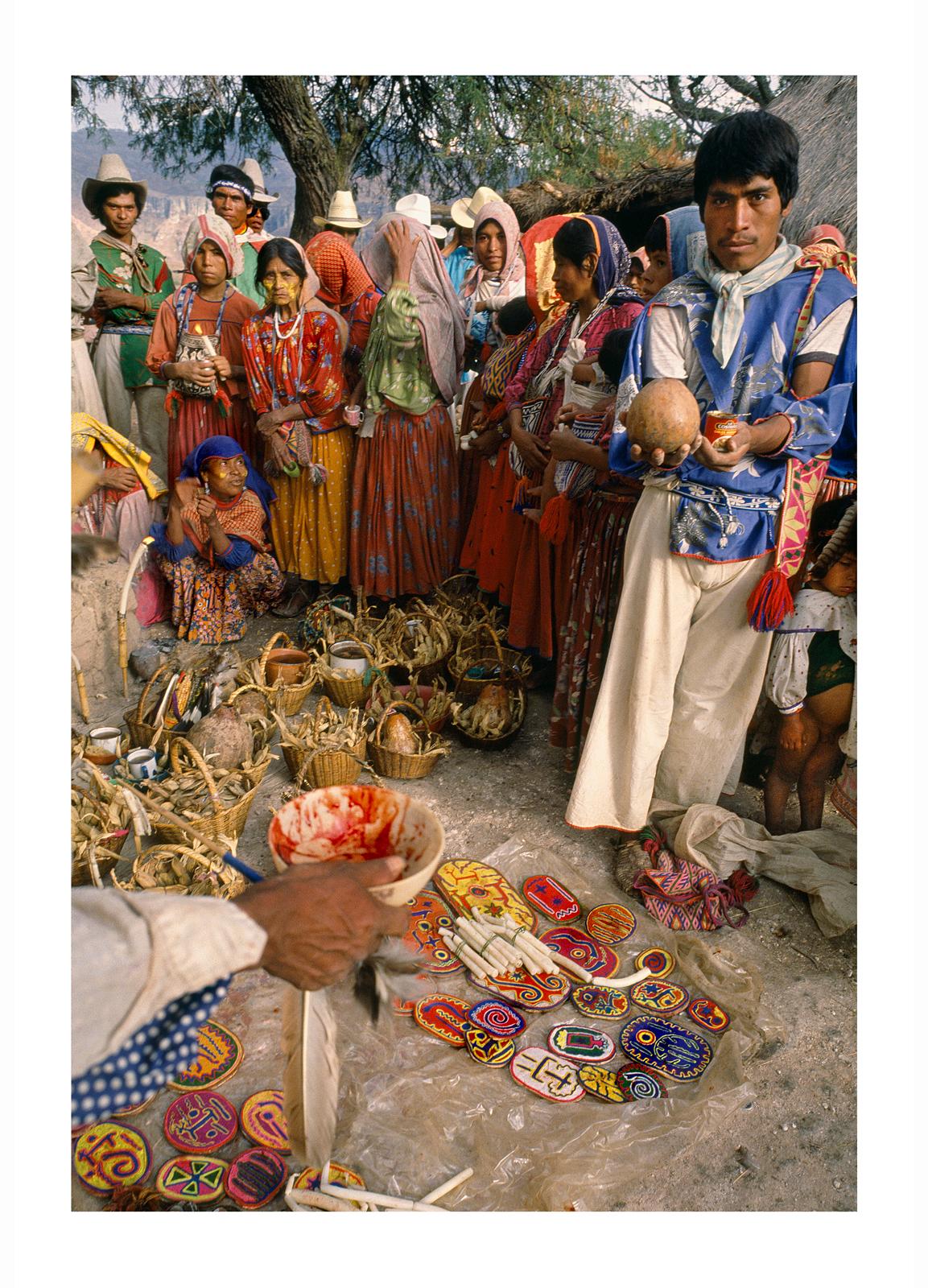Items Similar to Simple Child
Want more images or videos?
Request additional images or videos from the seller
1 of 5
Jeffrey SilverthorneSimple Child2005
2005
About the Item
Edition of 12
Digital c-print
Signed, titled, dated and numbered by Jeffrey Silverthorne
Jeffrey Silverthorne was an American photographer known for photographing the dead at the state morgue of Rhode Island in the 1970s, documenting the Transvestites community of New York and the Boystown brothels of the Mexican-American border. He received many awards and was the recipient of the 1986 National Endowment for the Arts. His work has been featured in numerous exhibitions including a career retrospective, “The Precision of Silence” at the Musée Nicéphore Niépce. His major publications include, “Morgue,” “Boystown: The Perfume of Desire” and “Directions for Leaving.”
- Creator:Jeffrey Silverthorne (1946, American)
- Creation Year:2005
- Dimensions:Height: 18 in (45.72 cm)Width: 12 in (30.48 cm)Depth: 0.1 in (2.54 mm)
- Medium:
- Movement & Style:
- Period:
- Condition:
- Gallery Location:Dallas, TX
- Reference Number:
About the Seller
4.9
Recognized Seller
These prestigious sellers are industry leaders and represent the highest echelon for item quality and design.
Gold Seller
These expertly vetted sellers are highly rated and consistently exceed customer expectations.
Established in 1995
1stDibs seller since 2013
302 sales on 1stDibs
Typical response time: 1 hour
- ShippingRetrieving quote...Ships From: Dallas, TX
- Return PolicyA return for this item may be initiated within 7 days of delivery.
More From This SellerView All
- Man and Taj Reflection by Steve McCurry, 1999, Digital C-PrintBy Steve McCurryLocated in Dallas, TXMan and Taj Reflection by Steve McCurry depicts a man dressed in white, kneeling down to gather water below him. The Taj Mahal is mirrored almost perfectly in the still water. This ...Category
1990s Contemporary Color Photography
MaterialsDigital
- Tram, Calcutta by Steve McCurry, 1997, Digital C- Print, PhotographyBy Steve McCurryLocated in Dallas, TXTram, Calcutta by Steve McCurry depicts a bustling intersection. The streets are lined with markets selling fruit, clothes and other varying products. People fill the streets, some w...Category
1990s Contemporary Color Photography
MaterialsDigital
- Boy in Mid-Flight by Steve McCurry, 2007, Digital C-Print, PhotographyBy Steve McCurryLocated in Dallas, TXBoy in Mid-Flight by Steve McCurry is listed as a 20 x 24-inch digital c-print, available in an edition of 90. This photograph is printed on FujiFlex Crystal Archive Supergloss Paper...Category
Early 2000s Contemporary Color Photography
MaterialsDigital
- Dust Storm (Vertical) by Steve McCurry, 1983, Digital C-Print, PhotographyBy Steve McCurryLocated in Dallas, TXDust Storm (Vertical) by Steve McCurry is a 30 x 24 inch Digital C-Print on FujiFlex Crystal Archive Supergloss Paper, available in an edition of 75. This photograph features a group...Category
1980s Contemporary Color Photography
MaterialsDigital
- Fishermen at Weligama by Steve McCurry, 1995, Digital C- PrintBy Steve McCurryLocated in Dallas, TXFishermen at Wligama by Steve McCurry features four men fishing in the ocean, on the shores of Sri Lanka. Three of the men are sitting on top of tall sticks, perched above the water ...Category
1990s Contemporary Color Photography
MaterialsDigital
- Woman in Yellow Skirt, Nuevo LaredoBy Jeffrey SilverthorneLocated in Dallas, TXEdition of 12 Archival pigment print Signed, titled, dated and numbered by Jeffrey Silverthorne Jeffrey Silverthorne was an American photographer known for photographing the dead at...Category
2010s Contemporary Color Photography
MaterialsDigital
You May Also Like
- Circus Christi: "Crucifixion"Located in Ciudad De México, MXFernando Bayona, Circus Christi: "Crucifixión". Fine Art Inkjet Print Sizes: S: 25.6 x 20.8 in. / Ed. 3 M: 41.7 x 33 in. / Ed. 3 L: 53.1 x 41.7 in. / Ed. 2 + 1A.P "Circus Christi is based on the question: What would happen if Jesus was born on the periphery of any major metropolis in the last three decades and was a rock band lead singer? The result is a group of images that visually reconfigures the usual viacrucis in an imaginary full of social problems around sexual ambiguity, drugs, sex, violence and music. Beyond the apparent provocation, Bayona's atmospheres are inspired by traditional scenes inscribed in the history of art, whose synchronic representation and symbolism disputes the social constructions around "sin" and "temptation" while rejecting all kinds of censorship and advocating for freedom of worship...Category
21st Century and Contemporary Contemporary Color Photography
MaterialsInkjet
- Once Upon a Time: "Bicephalous"Located in Ciudad De México, MXFernando Bayona, Once Upon a Time: "Bicephalous". Fine Art Inkjet Print Sizes: S: 25.6 x 20.8 in. / Ed. 3 M: 41.7 x 33 in. / Ed. 3 L: 53.1 x 41.7 in. / Ed. 2 + 1A.P "The narrati...Category
21st Century and Contemporary Contemporary Color Photography
MaterialsInkjet
- Out of the Blue: "At Home"Located in Ciudad De México, MXFernando Bayona, Out of the Blue: "At Home". Fine Art Inkjet Print Sizes: S: 25.6 x 20.8 in. / Ed. 3 M: 41.7 x 33 in. / Ed. 3 L: 53.1 x 41.7 in. / Ed. 2 + 1A.P In out of the blu...Category
21st Century and Contemporary Contemporary Color Photography
MaterialsInkjet
- HUICHOL: MOUNTAIN, DESERT, NEW YORK (`95-`21)By PABLO ORTIZ-MONASTERIOLocated in Ciudad De México, MXThe first person to photograph the Huichol in their remote communities in the inaccessible canyons of the Western Sierra Madre was probably the Norwegian anthropologist, Carl Lumholtz. He ventured into their territory in 1895, shortly before the arrival of the French naturalist and ethnographer Léon Diguet, who was also a photographer. Like so many who were engaged with documenting Indigenous peoples across the Americas in those brutal years of expansion and settlement, Lumholtz believed that the disappearance of his subjects was inevitable: “the weaker must succumb to the stronger, and the Indians will ultimately all become Mexicans.” The photographs of the Huichol by Pablo Ortiz Monasterio—taken on some twenty trips over the past three decades—prove that Lumholtz was fortunately, terribly wrong. They reveal abundant evidence of cultural survival (what the Huichol call “la costumbre”), made possible by their extraordinary resistance to the religious, nationalist, and economic forces that have long assaulted—and that continue to assault—Indigenous communities everywhere. Though Ortiz Monasterio is also an outsider, he does not operate—like Lumholtz or Diguet—as an old-fashioned preservationist, nor is he confident in the superiority of Western culture, nor is his work only destined for museum vitrines...Category
1990s Contemporary Color Photography
MaterialsArchival Pigment, Inkjet
- HUICHOL: MOUNTAIN, DESERT, NEW YORK (`95-`21). Limited edition of 5.By PABLO ORTIZ-MONASTERIOLocated in Ciudad De México, MXDocumentary Photograph. Contemporary Inkjet on cotton. Limited edition of 5. Signed front and verso. Framed in lacquered black frame with spacer) The first person to photograph the Huichol in their remote communities in the inaccessible canyons of the Western Sierra Madre was probably the Norwegian anthropologist, Carl Lumholtz. He ventured into their territory in 1895, shortly before the arrival of the French naturalist and ethnographer Léon Diguet, who was also a photographer. Like so many who were engaged with documenting Indigenous peoples across the Americas in those brutal years of expansion and settlement, Lumholtz believed that the disappearance of his subjects was inevitable: “the weaker must succumb to the stronger, and the Indians will ultimately all become Mexicans.” The photographs of the Huichol by Pablo Ortiz Monasterio—taken on some twenty trips over the past three decades—prove that Lumholtz was fortunately, terribly wrong. They reveal abundant evidence of cultural survival (what the Huichol call “la costumbre”), made possible by their extraordinary resistance to the religious, nationalist, and economic forces that have long assaulted—and that continue to assault—Indigenous communities everywhere. Though Ortiz Monasterio is also an outsider, he does not operate—like Lumholtz or Diguet—as an old-fashioned preservationist, nor is he confident in the superiority of Western culture, nor is his work only destined for museum vitrines...Category
1990s Contemporary Color Photography
MaterialsArchival Pigment, Inkjet
- HUICHOL: MOUNTAIN, DESERT, NEW YORK (`95-`21). Limited edition of 5.By PABLO ORTIZ-MONASTERIOLocated in Ciudad De México, MXDocumentary Photograph. Contemporary Inkjet on cotton. Limited edition of 5. Signed front and verso. Framed in lacquered black frame with spacer) The first person to photograph the Huichol in their remote communities in the inaccessible canyons of the Western Sierra Madre was probably the Norwegian anthropologist, Carl Lumholtz. He ventured into their territory in 1895, shortly before the arrival of the French naturalist and ethnographer Léon Diguet, who was also a photographer. Like so many who were engaged with documenting Indigenous peoples across the Americas in those brutal years of expansion and settlement, Lumholtz believed that the disappearance of his subjects was inevitable: “the weaker must succumb to the stronger, and the Indians will ultimately all become Mexicans.” The photographs of the Huichol by Pablo Ortiz Monasterio—taken on some twenty trips over the past three decades—prove that Lumholtz was fortunately, terribly wrong. They reveal abundant evidence of cultural survival (what the Huichol call “la costumbre”), made possible by their extraordinary resistance to the religious, nationalist, and economic forces that have long assaulted—and that continue to assault—Indigenous communities everywhere. Though Ortiz Monasterio is also an outsider, he does not operate—like Lumholtz or Diguet—as an old-fashioned preservationist, nor is he confident in the superiority of Western culture, nor is his work only destined for museum vitrines...Category
1990s Contemporary Color Photography
MaterialsArchival Pigment, Inkjet
Recently Viewed
View AllMore Ways To Browse
Brothel Art
1970s Perfume
Woven Dior
Austrian Bohemian
Set Of Blue Mirrors
Clothes Line
Red And Yellow Photograph
Oversized Retro Prints
Posters Of California
Heart Photo Frame
International Watch Works
Atlanta Photography
French Architectural Photographs
Kaleidoscope Used For
Central Station
Woman Falling
Ed Diers
The Pianist





